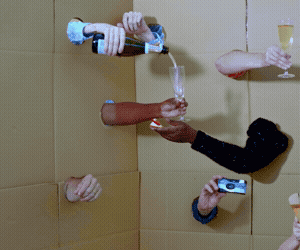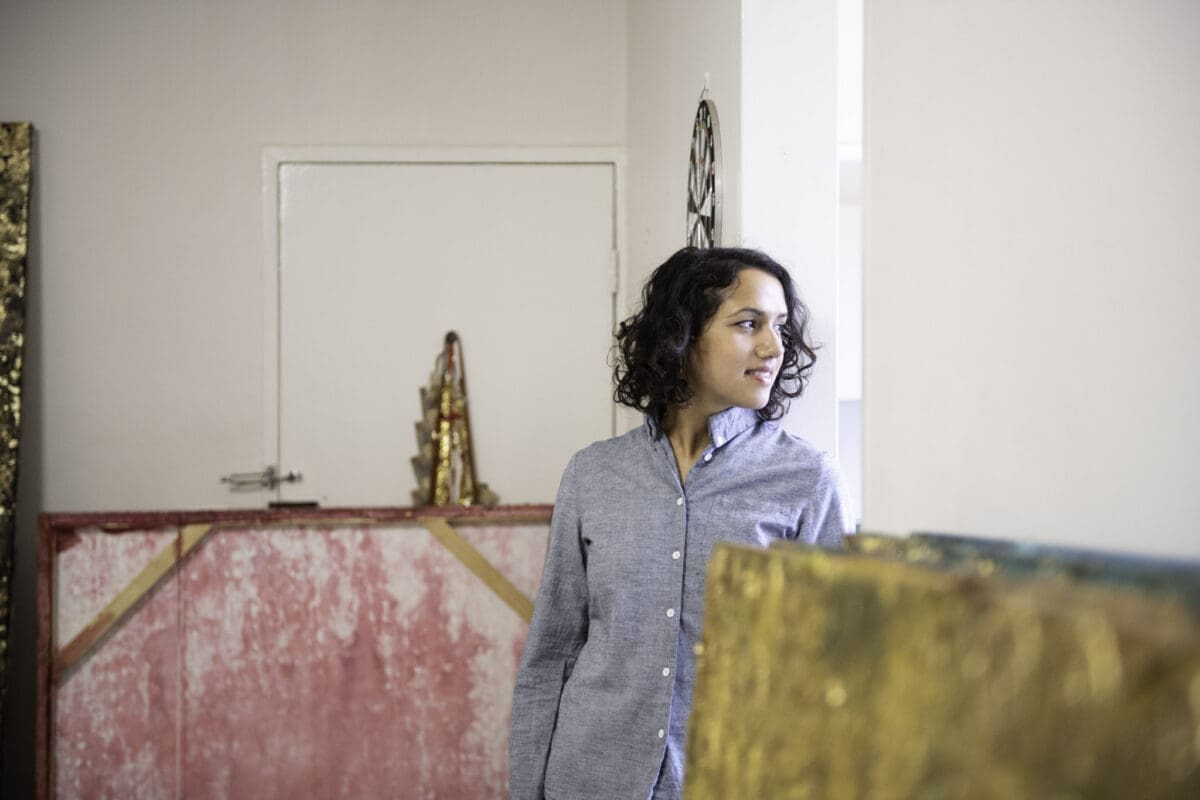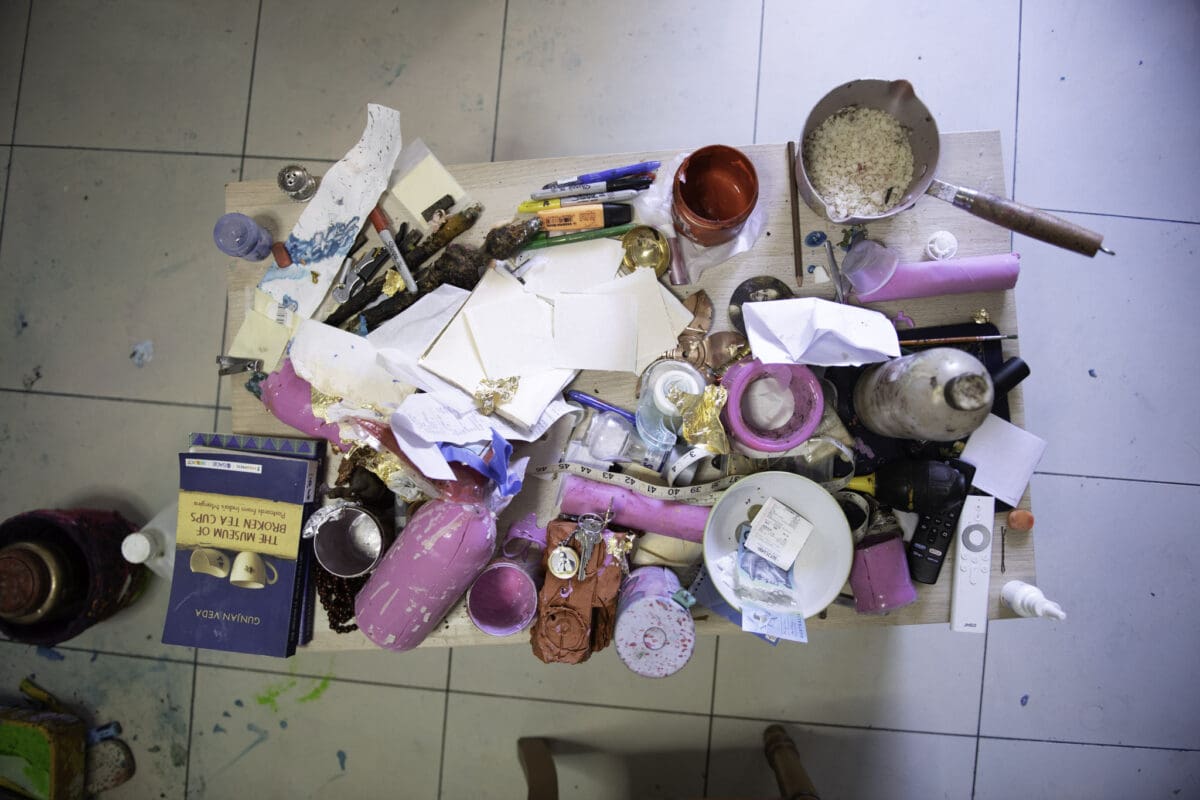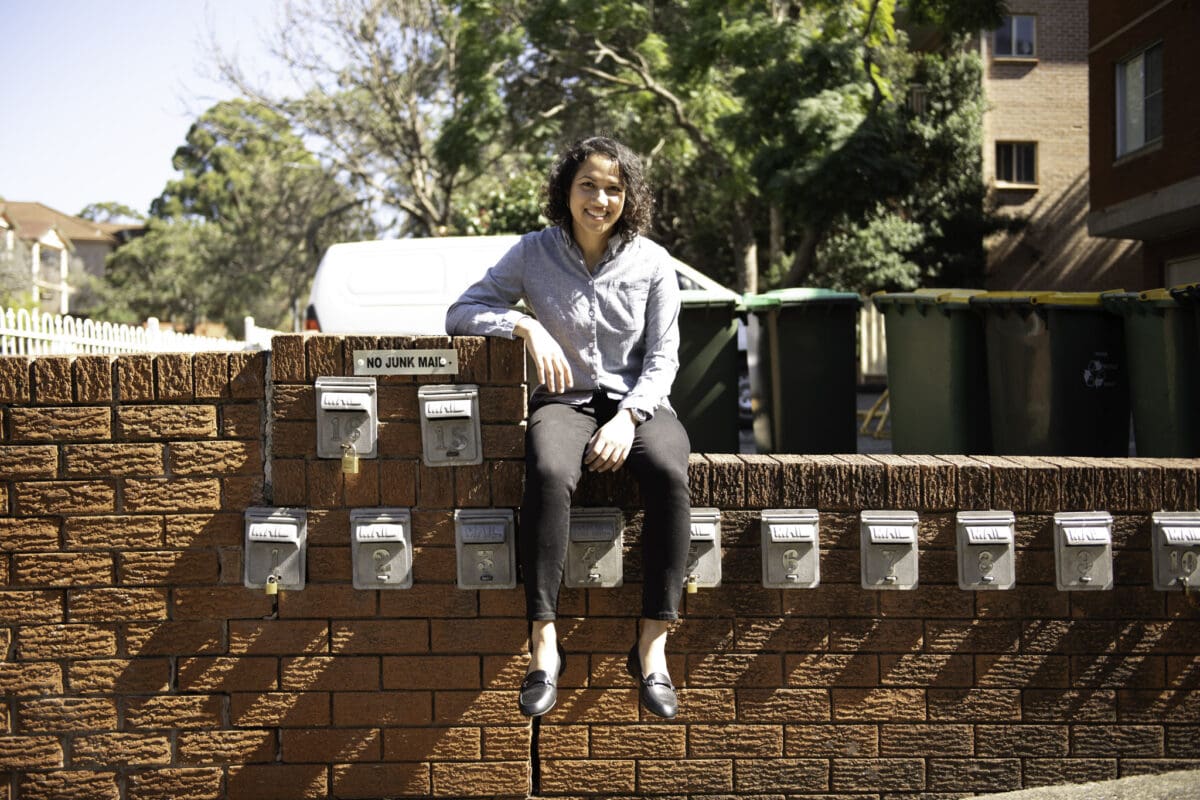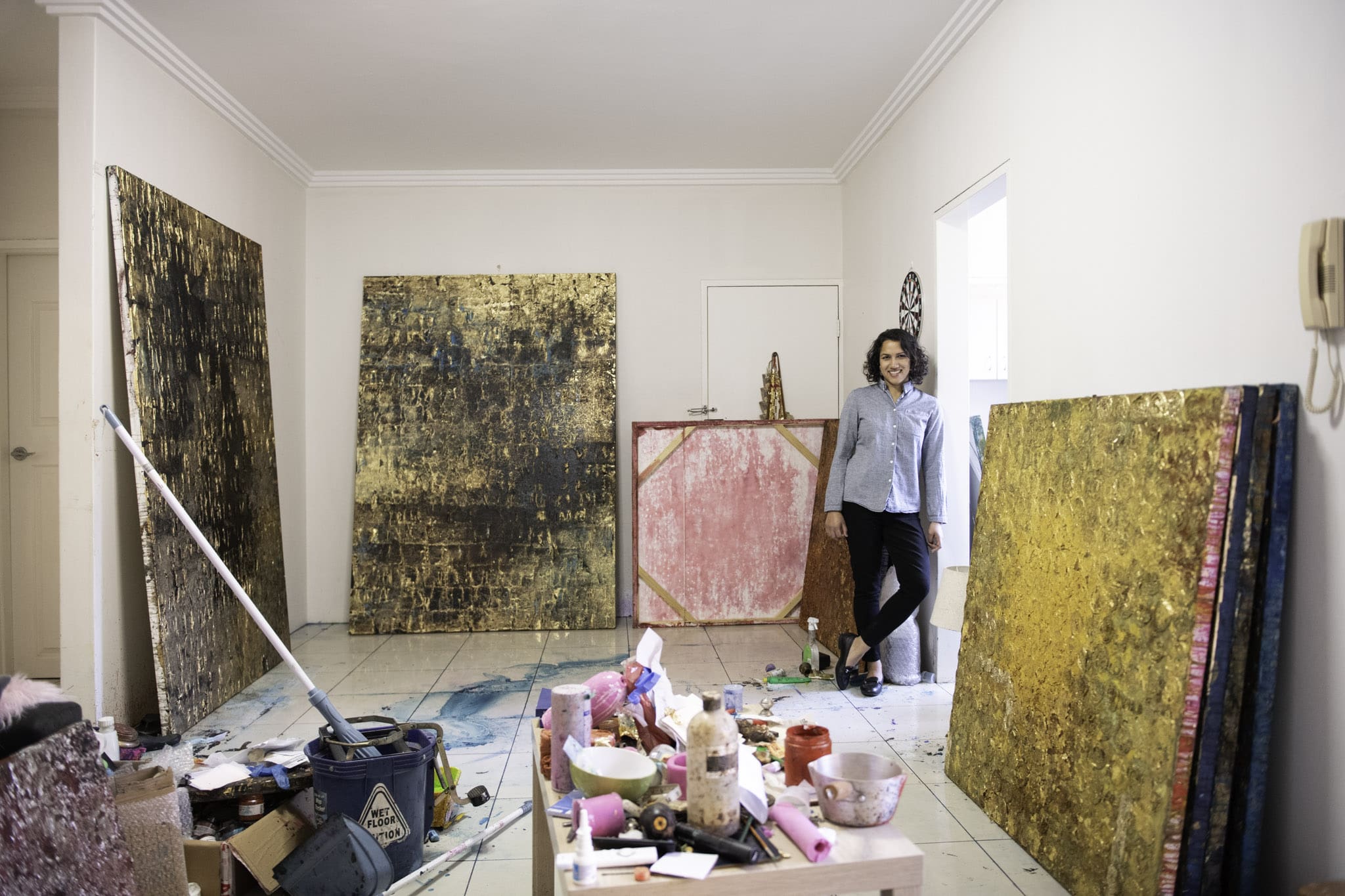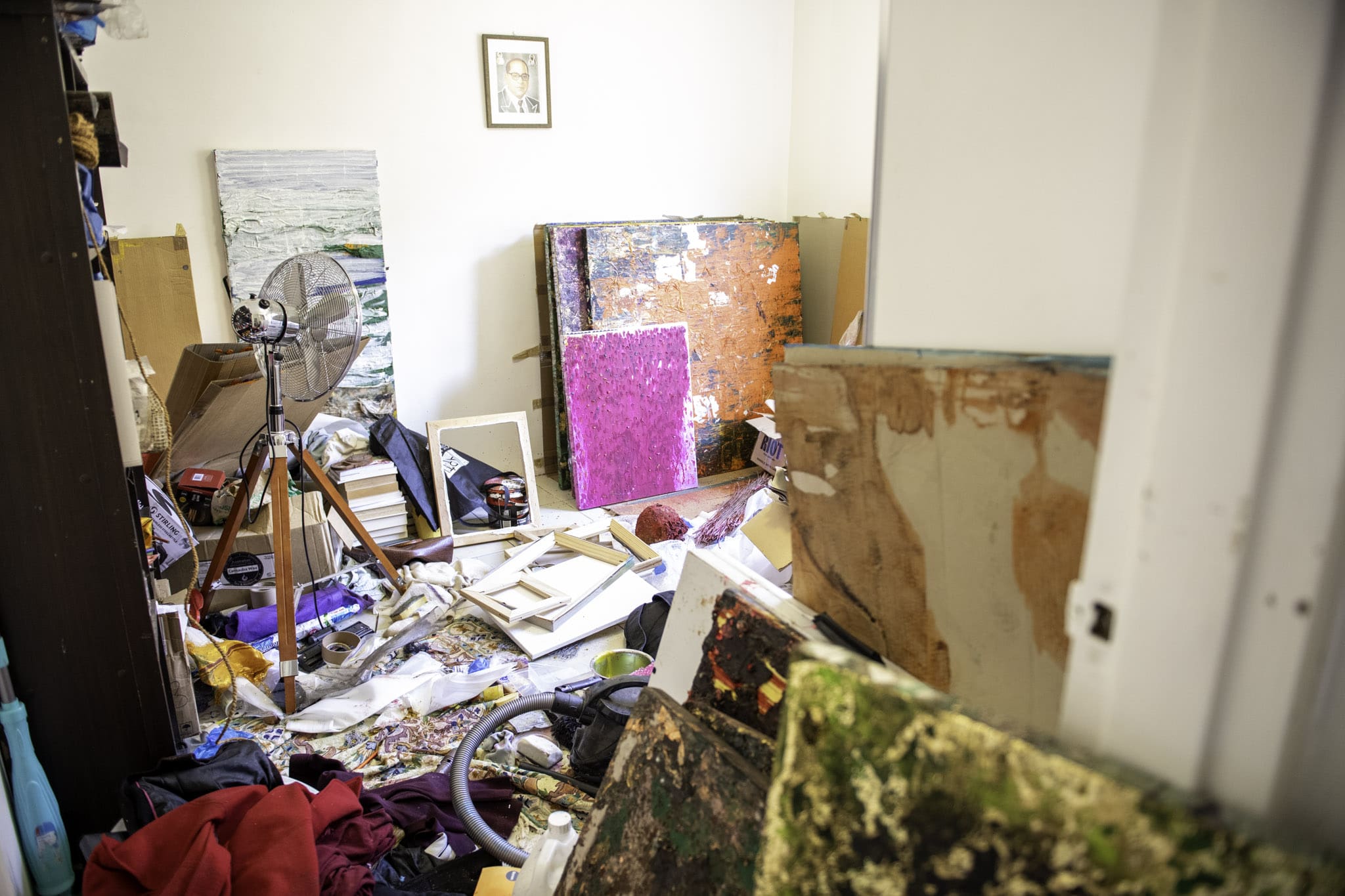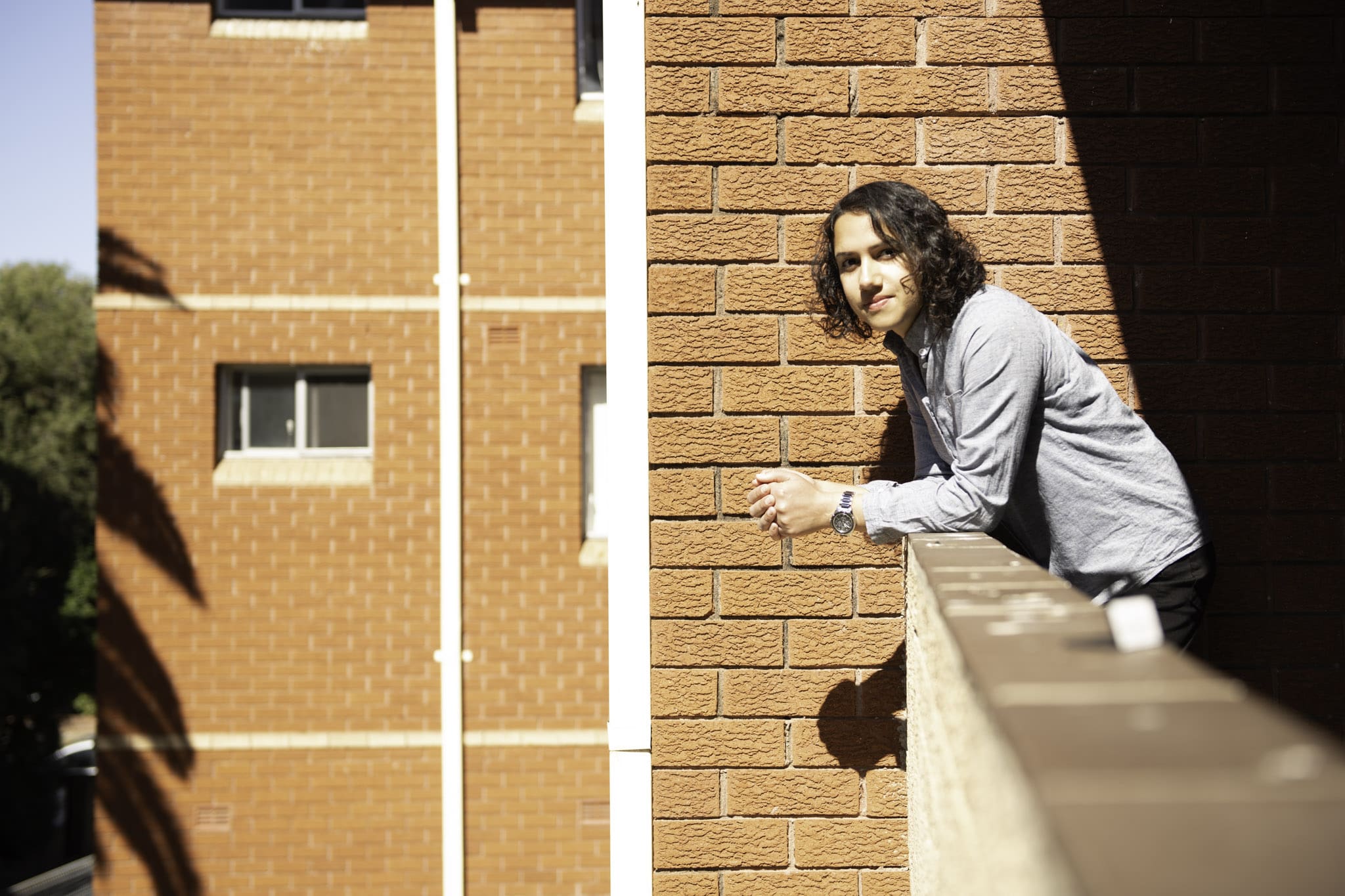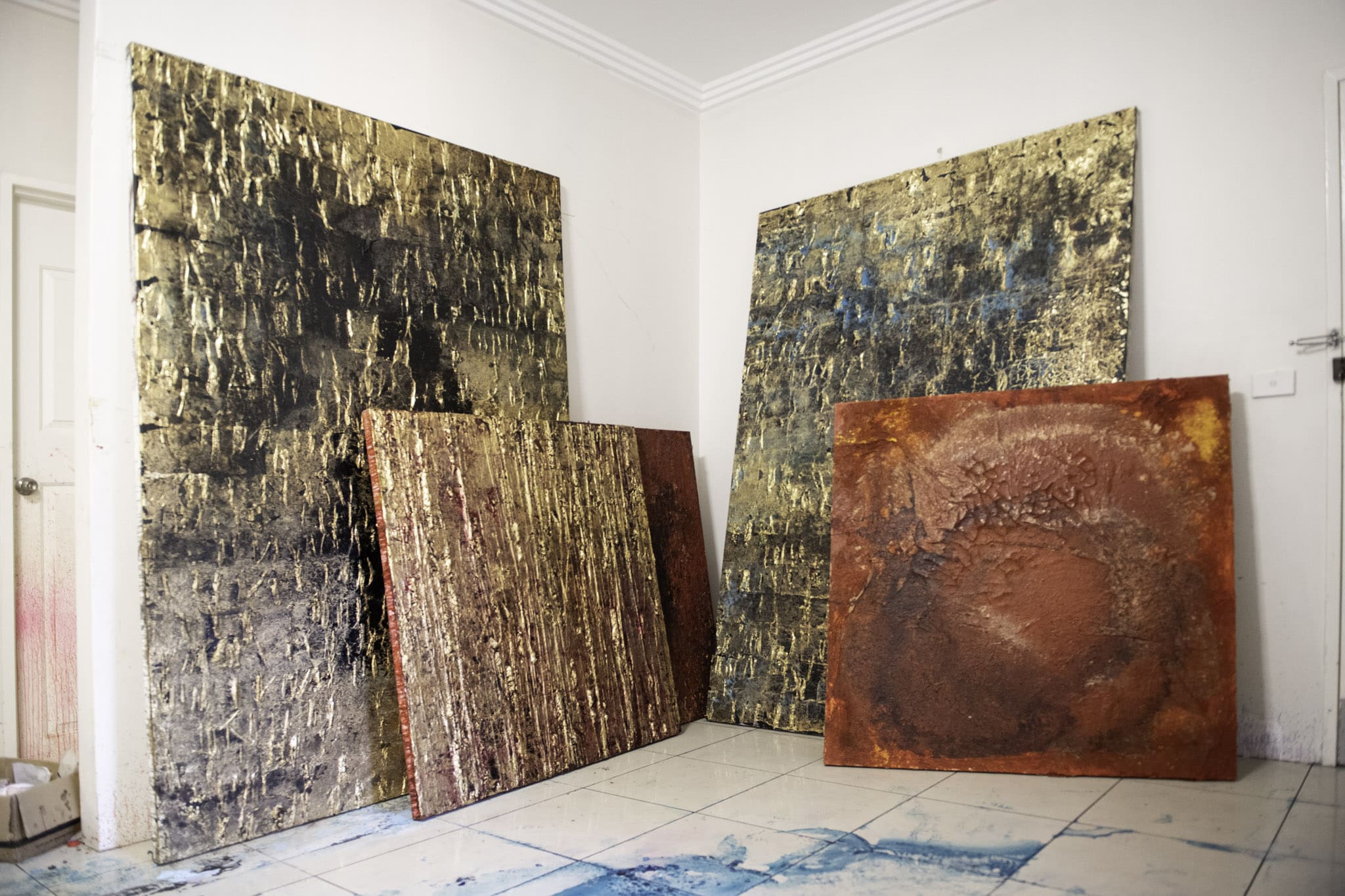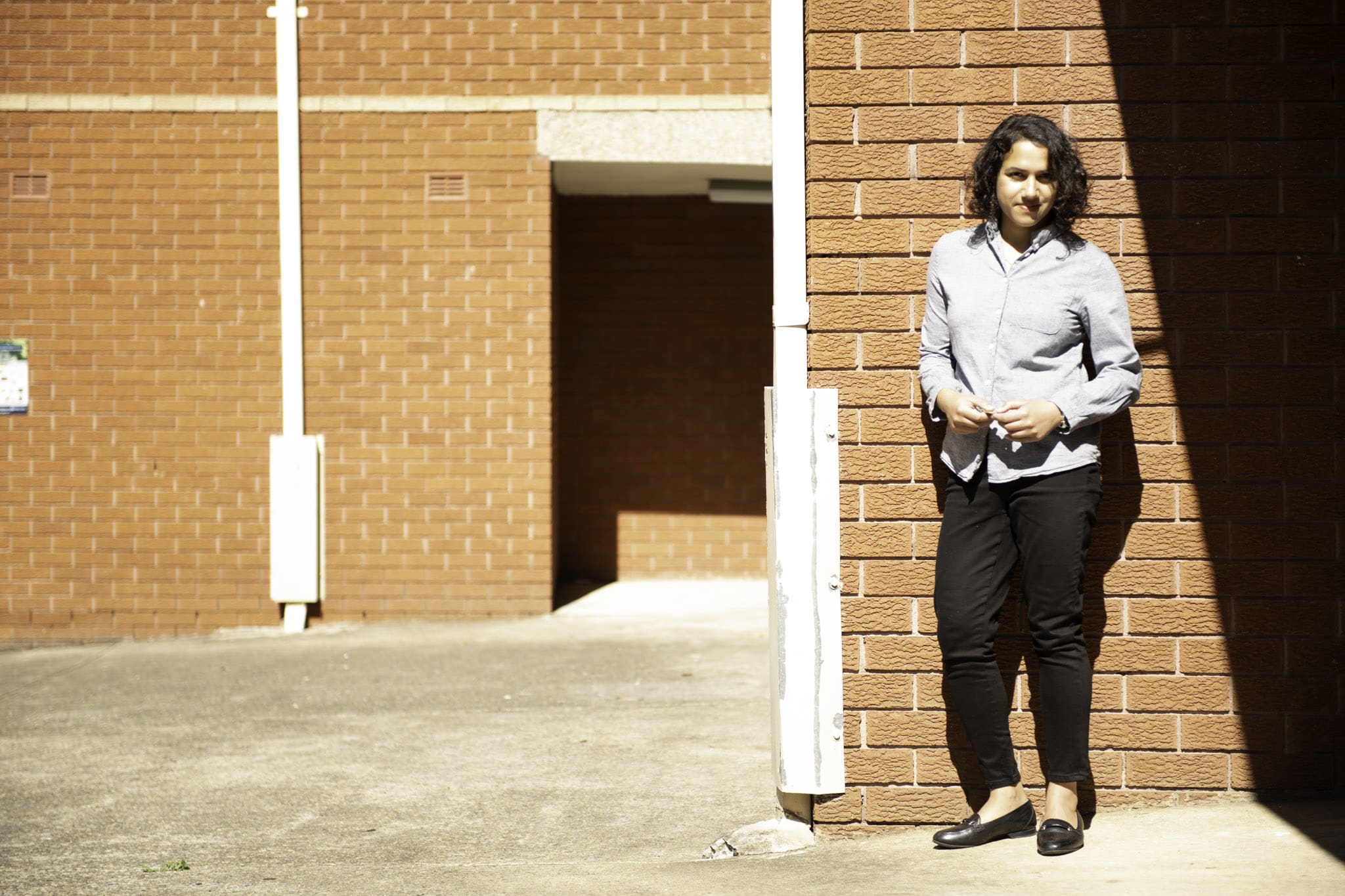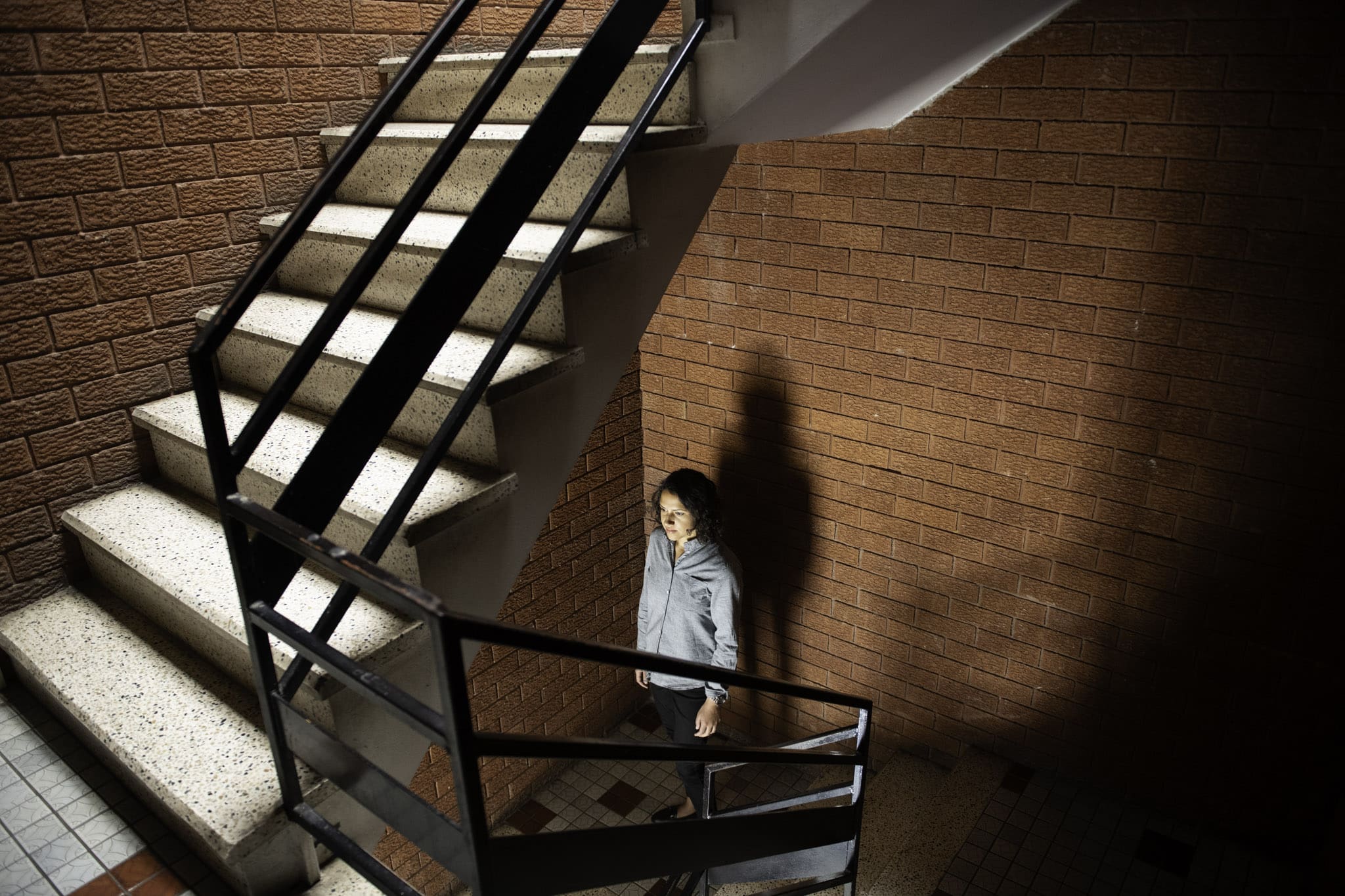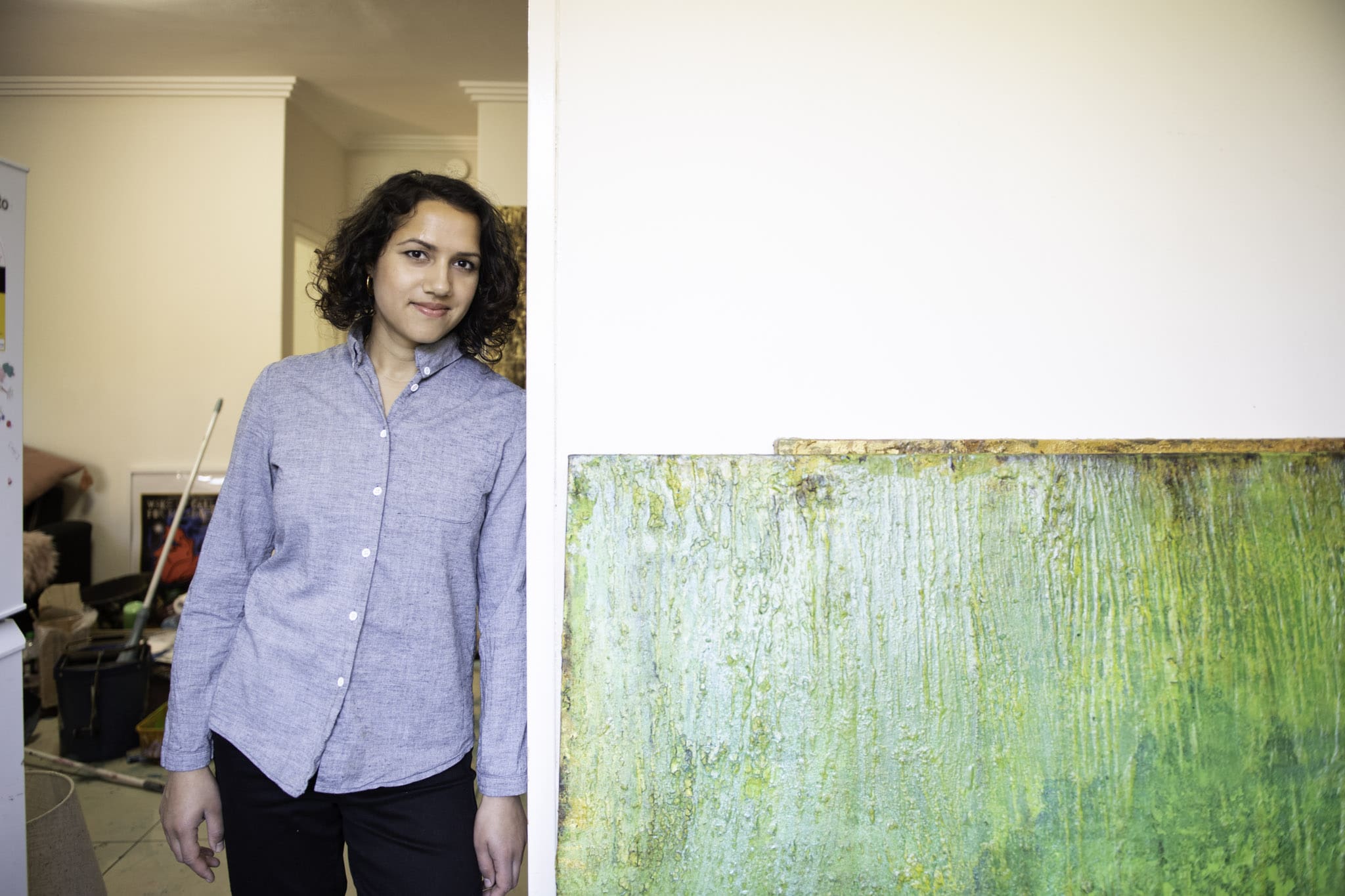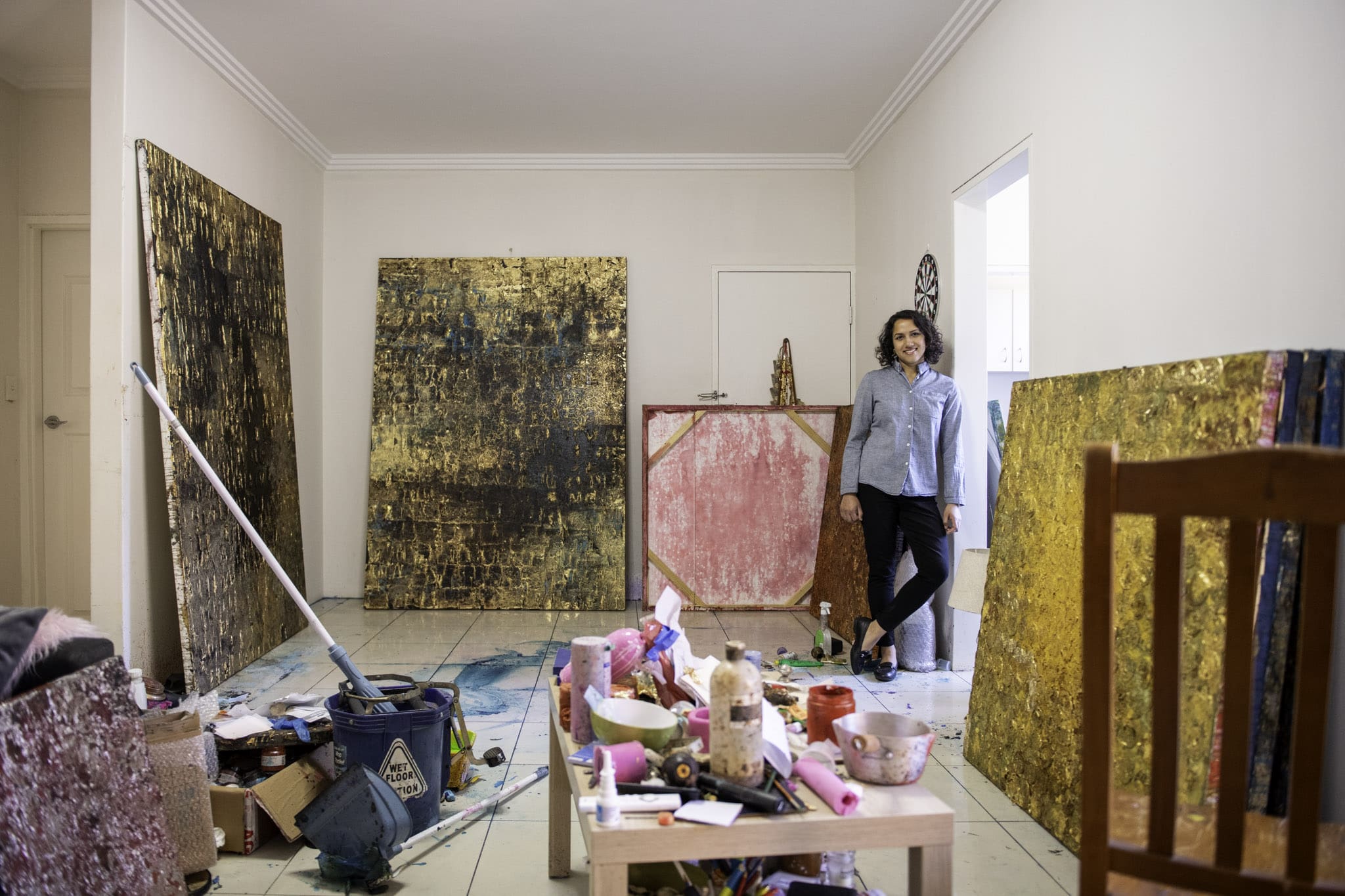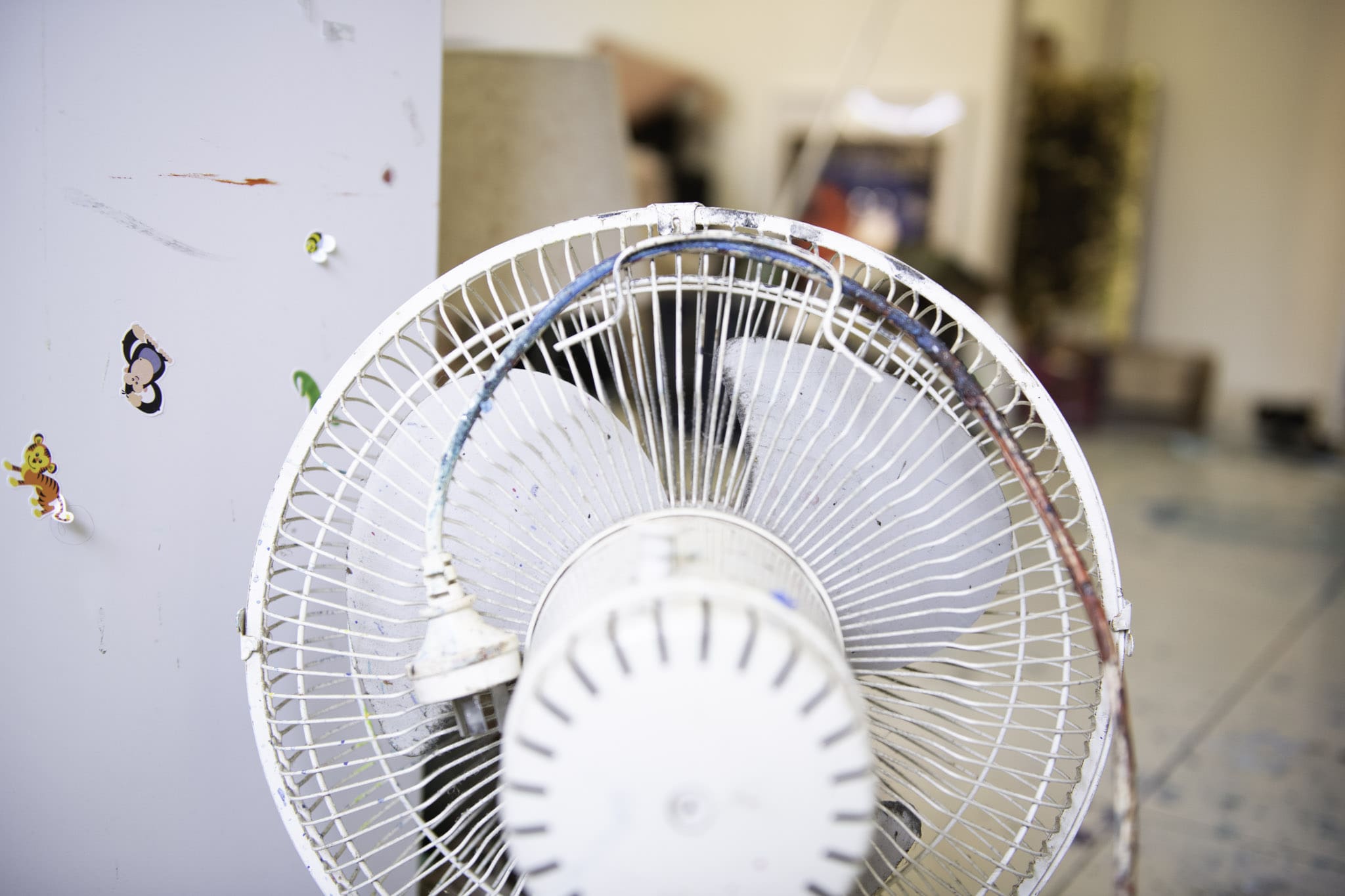Kirtika Kain’s Western Sydney apartment on Dharug Country is crowded with boxes of materials and new canvases. She came back from a three-month residency in Italy in November 2022 and since then she’s been living alongside her work, preparing for her solo exhibition Blue Bloods at Roslyn Oxley9 and for the Biennale of Sydney next year. The cohabitation has been intense and sometimes messy, but Kain says studio life is teaching her new confidence.
Kain was born in New Delhi and raised in Australia. Her work explores her cultural inheritances as a Dalit woman, and her materials are often loaded with associations, particularly around religion, caste and histories of oppression. But as she sees it, these materials become something more in the studio. Her latest body of work is about staying open to the vastness and possibility of what that could be.
Place
Kirtika Kain: The nature of being in the diaspora is that you’re piecing together fragments but especially with Dalit art, there’s no archive. There’s no representation in culture and museums. There’s very little that’s been formally kept or held. There’s no aura around our history, but what we’re left with is also ancient and a lot of that history is absorbed in the land, the earth, the oral tradition and in our bodies.
This generation of Dalit artists, I think we’re considering and shaping what that looks like. I’m really enlivened by that. Last year, the artist Sajan Mani invited me to be part of the exhibition Wake Up Calls For My Ancestors in Berlin. That felt like the first time I didn’t have to explain who I was. There’s a huge generation of authors too. I feel like I have a place in that and my own unique way of thinking through what it means to be standing here and what came before.
Process
Kirtika Kain: What I enjoy, or maybe sometimes not enjoy so much, is that no one tells you how to do this. How I choose materials is very instinctive. A lot are from Indian grocery stores—rice, turmeric and beads. I also use a lot of tar, wax, gold leaf, candle wicks and pigments. I’m very aware of the loadedness of these materials and their associations with religion and ritual, but I feel like when they are in my space, they’re mine. When they come into the studio it’s about their material qualities, the colour or the way they coagulate or sit on the canvas. There are other elements I’m interested in.
Making the work is like taking what I do know— these materials that I’ve grown up with or that are described in the literature I read—and sensing what they can be. It’s almost like feeling into the darkness.
I’m living with these works, too. I might apply paint or gold leaf on tar and then I need them to dry so they sit there while I move around them. They do feel like beings. You interact, you cross paths, you meet again. Some of them have just been giving me such a hard time. I’m like, “What do you need from me?” It does feel like working with a really difficult maternal ancestor.
More and more, my work taps into something that feels quite ancient—all that history that’s been absorbed, especially in our bodies—and that only comes through the process of layering. It’s not an intellectual exercise.
Projects
Kirtika Kain: It’s always unfurling. There’s always an aspect of Dalit culture and history that I’m interested in. The materials and things that I bring into my practice evolve. Earlier work was led by a search, a piece of text or something that I’d found in the archive that I was working around. For the current work, I’ve been thinking about all the nuances— the colours and shades and dimensionality—that are overlooked when just one side of our history as victims of oppression is represented.
The works started off really colourful and vibrant, quite dense wax works with a lot of colour. As I was working, I realised that to experience the lightness, I also needed to have that darkness with the tar.
It’s been quite a process making this work over the year. The surfaces have been developed and laid down so many times. It’s been almost like a search for what that vastness, that dimensionality, looks like.
“More and more, my work taps into something that feels quite ancient—all that history that’s been absorbed, especially in our bodies—and that only comes through the process of layering.”
Blue is the colour of the Dalit resistance and implies royalty, which is obviously not something that’s associated with the Dalit community and those in that section of the caste hierarchy. For Blue Bloods I’ve been enjoying all that richness of the history I’ve inherited, what that could look like and the possibilities of that, and broadening the way the community is spoken about. These ideas will also inform my new commission for the Biennale of Sydney.
Last year I did a three-month residency in Italy with other artists. It was in a remote village. We cooked together, and connected as people, not just as artists. Seeing that integrity in the way people think, it really helped me sit with the mystery of what these new works are.
There’s been an expansion in my own life since art school—getting settled into creative life and its timetables. I’ve learned from my studio.
Not just as an Indian woman but as a Dalit woman, everything is so prescribed. Everything is told. You’re just told who to be and what to do and my studio has taught me otherwise. It’s been messy, chaotic and everything I couldn’t do.
Blue Bloods
Kirtika Kain
Roslyn Oxley9
30 November—16 December
Biennale of Sydney: Ten Thousand Suns
Various venues, Sydney
9 March 2024—10 June 2024

